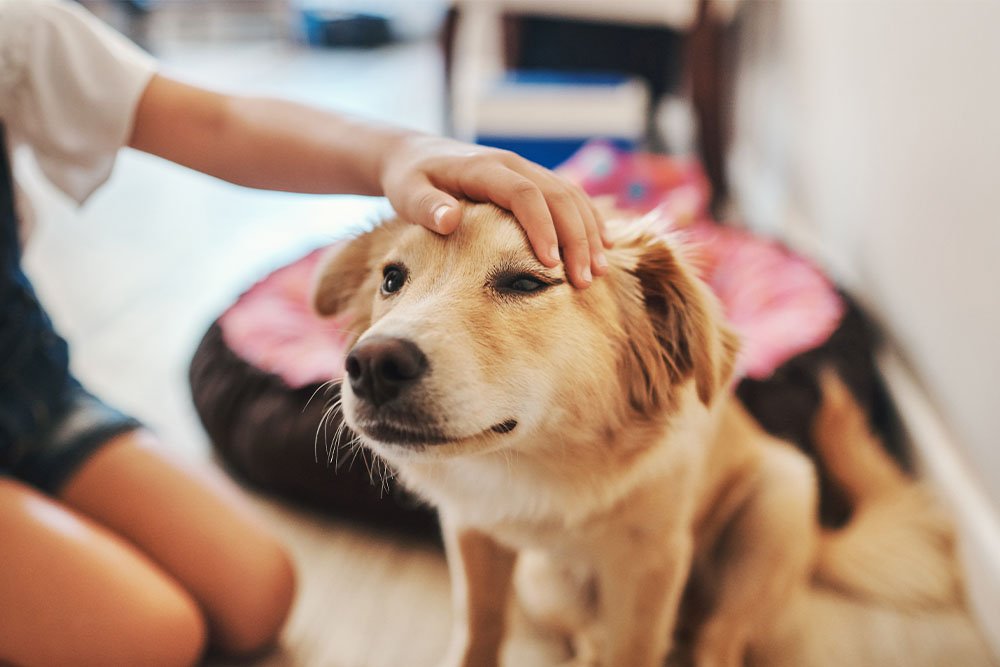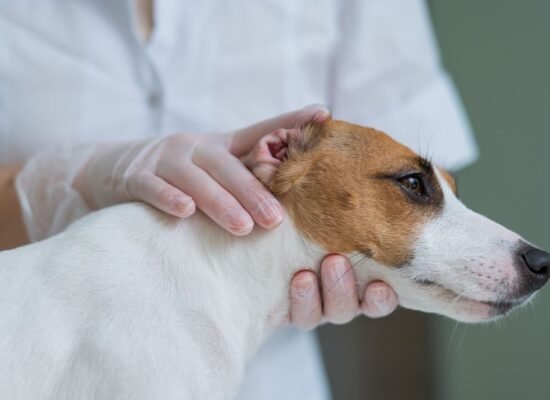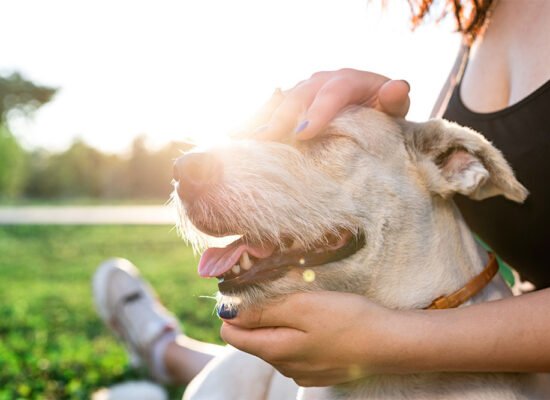Did you know that dogs can also display behaviors similar to autism like humans? If your autistic dog struggles to socialize or fears random sounds, they may be showing signs of autism-like behavior. Also, it’s important to find ways to make them feel better. Therefore, finding ways to make them feel better is important.
Caring for a dog with autism can be stressful. But once you understand the condition, it gets easier.
In this guide, you’ll learn everything about canine autism. You’ll discover various ways to support your dog while providing structure for them. Moreover, whether through special training techniques or by understanding your dog better, they will appreciate your efforts.
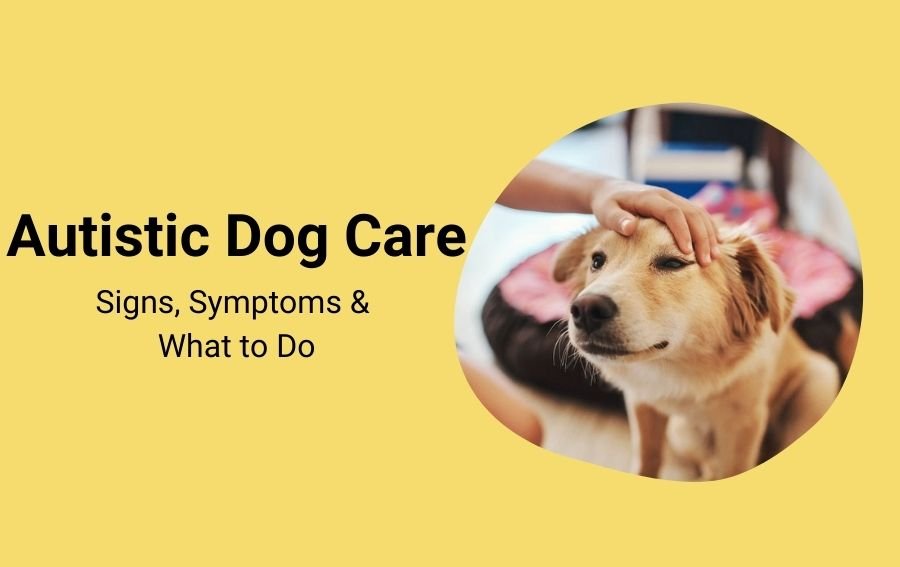
Below is a detailed outline of the topics we’ll cover in this guide. Click on any link to navigate directly to a specific section:
- What is Canine Autism?
- Why It’s Hard to Diagnose Canine Autism?
- How Vets Approach a Diagnosis?
- How to Support an Autistic Dog
- The Secret to Success: Establish a Routine
- How Routine Improves Behavior
- Final paw
- FAQs
What is Canine Autism?
Dog autism is not an officially recognized medical diagnosis. However, some dogs display signs similar to autism in humans. Further, these include difficulties in social interaction, repetitive behavior, and hypersensitivity. They may also have other underlying health issues like hookworms in dogs, which require attention.”
Typical behaviors of autistic dogs are as follows:
- Problems with people or other animals.
- Unusual behaviors like spinning or circling.
- Increased sensitivity to sounds, touch, or new environments.
- Avoid eye contact or touch.
Overall, these behaviors can look like other issues, such as anxiety. So, it’s best to talk to a vet.
Why It’s Hard to Diagnose Canine Autism?
Dogs cannot speak to explain their symptoms. Further, this makes it hard to diagnose autism. In addition, many symptoms overlap with other issues like anxiety or OCD. That’s why it’s important to consult your vet. Overall, they will help rule out other problems.
How Vets Approach a Diagnosis?
Vets watch how your dog behaves in different places. In fact, they rule out trauma or medical issues. Finally, they check if your dog’s behavior stays the same over time. If you’re worried about your dog’s behavior, our online vets are here to help. Get expert advice and personalized care from the comfort of your home. Reach out today for a consultation!
How to Support an Autistic Dog
There are several ways to support your love. Lets discuss
1. Create a quiet and orderly space
If your dog has autism, their world needs to be well-ordered and predictable. This helps them feel safer and more confident. As a result, they experience less stress. But, changes in their environment or routine can cause anxiety. Further, the following are different steps to consider:
Steps to Create a Calm Space:
- Choose soft, peaceful areas in the house where your dog likes to spend time.
- Provide a quiet place for your dog to retreat when they feel uneasy.
- Avoid loud noises and chaotic environments like busy parks or crowded gatherings.
2. Training Techniques for Autistic Dogs
Teaching an autistic dog requires both time and consistency. However, it can be a bit more challenging. This is because some training guides may not fully apply to dogs with autism. Therefore, they might not be able to follow all the steps thoroughly. Besides, here are some of the best training techniques for autistic dogs:
The Best Reinforcement Is Positive:
- Firstly, always reward good behavior with treats and praise.
- Keep training sessions short to avoid overwhelming your dog.
- Use the same commands and gestures every time.
- Finally, never punish your dog, as this increases fear.
Consistency is Key:
- First, by the hour, it goes fixed to feeding, puppy walking, and training times.
- Second, they should also standardize the commands and gestures.
3. Physical Exercise and Play
All dogs need exercise. However, autistic dogs may not enjoy high-energy activities. Moreover, respect their comfort zone. The following list of low-stress physical activities:
Low-Stress Physical Activities:
- Walking slowly in quiet areas.
- Mild fetch or tug-of-war video in the yard.
- In addition, Use puzzle toys that busy their brain, but do not overexcite it.
4. Diet of Autistic Dogs
One thing that needs to be mentioned is the significant effect of a balanced diet on your dog’s behavior. In fact, certain foods can relax your dog and offer many health benefits. For instance, best foods for dogs with anal gland issues also help improve their overall well-being. Also, the following advice is helpful:
Key Nutritional Tips:
- Feed foods rich in Omega-3 to improve concentration.
- Consider calming supplements like chamomile.
- Make sure your dog gets enough protein daily.
5. Sensory Sensitivities
Autistic dogs are sensitive to things like loud sounds or strange textures. You may also observe signs like fast breathing without panting, which could indicate stress. Also, you can manage these by reducing stressors.
How to Prevent Sensory Overload:
- First, brush your dog slowly and gently.
- Avoid loud, sudden sounds.
- Plus, introduce new things slowly and see how your dog reacts.
6. Supporting Emotional Well-Being
Lastly, it is very important to help your dog manage stress because it negatively affects them. Moreover, for autistic dogs, anxiety can easily manifest. Fortunately, there are things you can do to reduce it. In addition, these are a few techniques for reducing stress:
Stress-Relieving Techniques:
- First, play calming music or use white noise.
- Next, try a pheromone diffuser to create a relaxed atmosphere.
- Then, spend quiet, quality time with your dog.
The Secret to Success: Establish a Routine
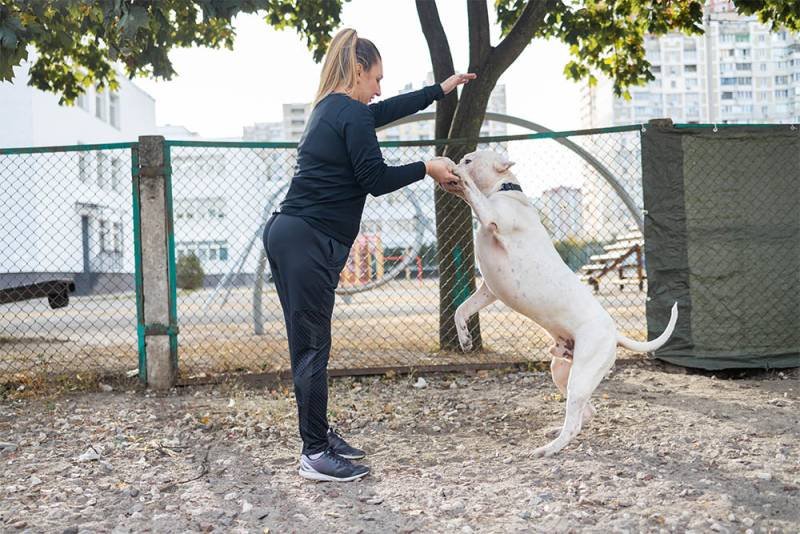
Dogs with autism thrive on routine. In fact, a regular daily schedule reduces their anxiety. Here’s how to create a routine:
| Routine Element | Recommended Approach | Why It Helps |
| Feeding Time | Stick to the same time every day for meals. | Provides security and stability. |
| Exercise | Walks at the same hour each day | Reduces anxiety by establishing predictability. |
| Training Sessions | Always use the same commands during training. | Reinforces learned behaviors effectively |
| Rest Periods | Allow for quiet, undisturbed rest after activities. | Helps prevent sensory overload and stress. |
How Routine Improves Behavior
- Firstly, there is a decrease in behaviors related to anxiety (e.g., a lack of control)
- Secondly, it will help your dog trust the environment.
- Thirdly, it helps you to figure out your stress triggers, which can be noise and light.
Final paw
In conclusion, caring for an autistic dog can be challenging, but it’s rewarding. By following these tips, you’ll help your dog feel safe and happy. Ultimately, a stable environment, proper training, and a healthy diet like adding vet-approved food toppers, are key to success. are key to success.
Remember, every dog is unique. The time you spend caring for your autistic dog will strengthen your bond.
FAQs
Q1. Can dogs be autistic?
Yes, some types of dogs do have autism-like behaviors in which they are able to perform repetitive actions, and they struggle with social Interaction.
Q2. Is training harder with an autistic dog?
It may be very difficult to train an autistic dog, but with encouragement and enforcing good methods, the training can be better.
Q3. What should I avoid when caring for an autistic dog?
Do not take your dog to places or situations that may stress him out or use aversive training techniques that may lead to anxiety.
Q4. Can diet affect an autistic dog’s behavior?
It also can mean useful supplements that should be included in the food and make the autistic dog feel less stressed and better.

